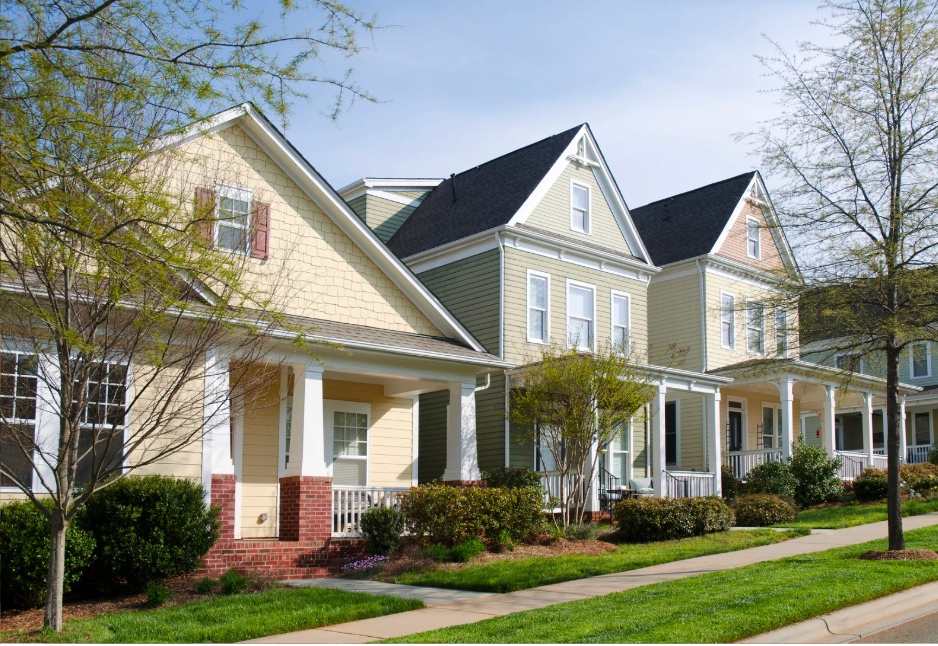Understanding the Rise of Multigenerational Living
The modern landscape of family dynamics is evolving significantly, particularly with the growing trend of multigenerational living arrangements. This phenomenon can be attributed to several factors, including economic pressures, cultural changes, and the desire for increased family support systems. As more families opt to live together under one roof—often encompassing grandparents, parents, and children—the need for larger homes with ample space is becoming increasingly essential.
Market Demand for Larger Homes
As multigenerational living continues to gain traction, there is an observable increase in demand for homes with multiple bedrooms and diverse living spaces. Families are seeking residences that can comfortably accommodate several generations without compromising on personal space or privacy. Real estate trends indicate a noticeable shift towards properties designed to meet the needs of larger households, which often includes separate living areas, additional bathrooms, and multiple kitchens. This demand offers significant opportunities for builders and real estate agents who specialize in constructing or selling homes that cater to this unique market segment.
Economic Factors Influencing Multigenerational Living
Economic factors play a critical role in the rise of multigenerational living. Escalating housing costs and a challenging job market have prompted many individuals and families to seek cost-effective solutions, such as combining households. By sharing a home, families can often alleviate financial burdens associated with housing expenses, utilities, and childcare. Additionally, this arrangement allows for shared caregiving responsibilities, which can ease the pressures of raising children or attending to aging parents.
Cultural Changes and Family Dynamics
Cultural shifts also significantly contribute to the popularity of multigenerational living. In many cultures, it is traditionally common for extended families to reside together, providing a support network that fosters strong family bonds. With increasing acceptance of varied family structures, coupled with the recognition of benefits associated with collective living, more families are inclined to follow this model. This evolution in family dynamics has resulted in a growing appreciation for homes that cater to specific needs, such as accessibility features for elderly family members or spaces designed for teenagers.
Opportunities for Builders and Real Estate Agents
The trend towards multigenerational living presents a wealth of opportunities for builders and real estate agents alike. Building firms can focus on creating homes that feature flexible floor plans, which allow families to adapt living spaces as needed. This may include the addition of secondary units, such as in-law suites or basement apartments, designed to provide independent living spaces within the same property. Real estate professionals can capitalize on this growing demand by marketing properties that offer the amenities and configurations families are actively seeking.
Design Considerations for Multigenerational Homes
When it comes to designing homes for multigenerational living, several considerations must be taken into account. Key features that are often desired include multiple master suites, open-concept living areas, and distinct entrances to facilitate independence among residents. Accessibility is another crucial factor; therefore, homes that incorporate universal design principles can enhance comfort and safety for family members of varying ages and physical abilities. These features not only improve the user experience but also add to the appeal and marketability of the property.
Conclusion
In summary, the increasing trend of multigenerational living arrangements is reshaping the housing market. Driven by economic considerations and shifting cultural norms, families are seeking larger homes that accommodate their unique needs. This shift not only presents a variety of challenges but also opens up numerous opportunities for builders and real estate professionals. Through thoughtful design and a keen understanding of market demand, industry stakeholders can effectively meet the evolving requirements of multigenerational households, contributing to the creation of homes that serve as comfortable and supportive environments for all family members.
FAQs
What is multigenerational living?
Multigenerational living refers to a housing arrangement where multiple generations of a family reside together in the same home. This can include grandparents, parents, children, and sometimes even extended family members.
Why is there an increase in multigenerational living arrangements?
The increase is largely attributed to economic factors such as rising housing costs, cultural shifts towards valuing family support systems, and the need for shared caregiving responsibilities.
What types of homes are popular among multigenerational families?
Popular homes for multigenerational families typically feature multiple bedrooms, separate living spaces, and amenities such as in-law suites, accessible layouts, and open-concept designs.
How can builders design homes for multigenerational living?
Builders can create flexible floor plans that include features like multiple master suites, private entrances, and open communal spaces, ensuring that the home accommodates the needs of all family members.
What advantages does multigenerational living offer?
Multigenerational living offers several advantages, including financial savings by sharing expenses, emotional support through family closeness, and practical assistance with childcare and eldercare responsibilities.

